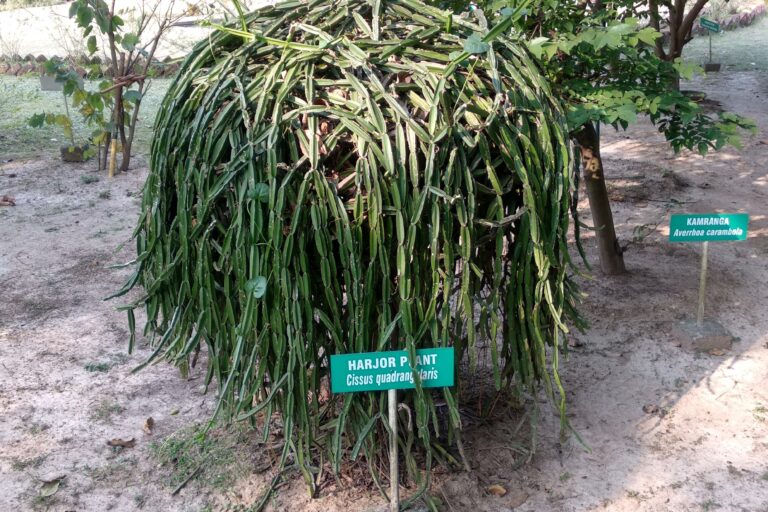- A recent study investigated the knowledge of biodiversity, particularly of non-timber forest products, among urban residents in West Bengal.
- The study found that regular contact with non-timber forest products can make people interested in biodiversity, which can support conservation.
- Non-timber forest products encompass all products that can be harvested from a forest, excluding commercial timber.
Researchers investigated knowledge of biodiversity, particularly non-timber forest products (NTFPs), among local urban residents in West Bengal and found that increasing local communities’ connectedness with nature is an important way to conserve the environment.
This study, by researchers from the Centre for Rural Development and Innovative Sustainable Technology (CRDIST) Indian Institute of Technology (IIT) Kharagpur, West Bengal, published in April this year in GeoJournal was a result of an interest “in the social dimension of nature-based solutions, especially how to reconnect people with nature to address critical issues such as biodiversity loss, climate change, and human well-being,” says Aloke Majumdar, a member of the research team.
“In our study, we focused on the rich biodiversity of West Bengal’s urban and peri-urban regions, especially the non-timber forest products (NTFPs) that are used by the local communities. We wanted to explore how these NTFPs can be used to increase awareness and appreciation of local flora and fauna and how they can contribute to conservation efforts,” says Majumdar.
NTFPs encompass all products that can be harvested from a forest excluding commercial timber. This includes mushrooms, seeds, saps, resins, plants that may have medicinal properties, as well as other types of wood. The researchers aimed to encourage local residents to engage more with forest resources by increasing their knowledge about plant species that provide NTFPs.

A participatory approach to studying and promoting NTFPs
The study used a questionnaire and interviews to understand local residents’ ability to identify NTFP plants and their ecological and economic significance, how residents may be using them and their knowledge of the plantation and conservation efforts that have taken place in locations such as parks, roadside and open spaces in the study area.
The study “used various methods such as games, quizzes, posters and field visits to make the learning process fun and interesting,” adds Majumdar.
“We chose this approach because we wanted to engage the local community in an interactive way, rather than just providing them with information. We also wanted to highlight the benefits of NTFPs for local livelihoods, health, and culture, and how they depend on the conservation of natural habitats. We think such approaches would also motivate local communities to support movements like Dibang Valley or Save Mollem, as they would realise the value of their natural resources and the threats they face from development projects,” said Majumdar.
Based on an estimation of the answers received, species that provide NTFPs were planted along with name plates in order to improve familiarity. These plates also contained information about the uses and value of each species.
Local community members participated in plantations and there was a subsequent increase in visits to the plantations.

The role of NTFPs in human-wildlife interactions
When asked if such initiatives could help mitigate human-wildlife conflict, Majumdar told Mongabay-India, “Yes, we think that increased support in the local community can help the conservation of mammalian and reptilian species, especially in areas of human-wildlife conflict. We found that regular contact with NTFPs can increase the knowledge and positive attitudes of the local people towards the wildlife that share their landscape. This can reduce the negative perceptions and hostility towards the wildlife and increase the tolerance and willingness to coexist with them. We also found that NTFPs can provide alternative sources of income and food security for the local people, which can reduce their dependence on and competition with wildlife.”
Honavalli Kumara from Salim Ali Centre for Ornithology and Natural History, Coimbatore, partially agrees and extends a word of caution. “Since NTFPs are seen as beneficial by people, they are considered important. If the origins of NTFPs, their habitats, and habitat status are communicated, then people value such habitats. This enhances the conservation value of such biodiversity. However, when animals are concerned, since they have been known as pests, getting the same confidence is ruled out. The people who collect NTFPs from the wild also often treat some of these animals as pests or problem creators. In such case getting the confidence of local communities becomes difficult.”

Planning long-term changes in perceptions and resource use
The research team plans to employ the promising results of this study in long-term conservation action. “We plan to expand the scope and scale of our intervention to other regions and communities. We also plan to monitor and evaluate the long-term impacts of our intervention on the awareness, attitudes, and behaviours of the local people, as well as on the conservation status of the NTFPs and the wildlife,” says Majumdar. The team hopes to develop guidelines on best practices for the extraction and use of NTFPs that can also aid in conservation.
For individuals and organisations that may be inspired to replicate this study in other parts of India, Majumdar suggests that a thorough assessment be done at the local level to understand ecological and economic nuances, along with challenges that are unique to each landscape. “This would help to design and deliver the intervention in a relevant and effective way. We also suggest that such approaches should involve the local stakeholders, such as the community members, leaders, and institutions, as well as the relevant government agencies and NGOs, to ensure their participation, support, and sustainability,” concludes Majumdar.
Read more: Studies highlight local perception of ecosystem services
Banner image: Local residents were surveyed for their knowledge of NTFPs. Photo by Aloke Majumdar.
